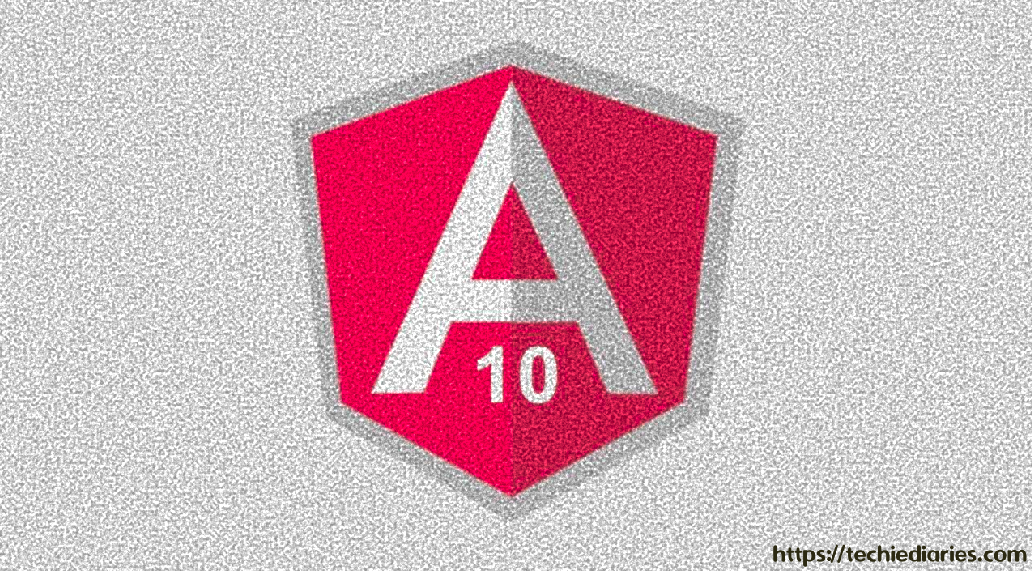Install Angular 10 CLI with NPM and Create a New Example App with Routing

In this quick how-to tutorial, we'll see how to use Angular CLI 10 to generate a project and serve it locally using a live-reload development server.

Angular 10 beta is released so the final release is due soon. Let's see how to install the latest beta version and create a new project.
Throughout this tutorial, we’ll see how to install Angular CLI 10 and initialize a new Angular 10 project with routing.
Step 1 — Installing Angular CLI 10
Let's start by installing Angular CLI 10 in our development machine.
Note: At this time, Angular 10 is in beta.

Head over to a new terminal and run the following command:
$ npm install --global @angular/cli@next
This will install @angular/[email protected] at the time of writing this tutorial.
That's it of everything goes as expected you should have Angular 10 CLI installed on your system.
Step 1 — Checking the Angular CLI Version
After installing Angular 10 CLI, you can run many commands. Let’s start by checking the version of the installed CLI:
$ ng version
You should get a similar output:
Angular CLI: 10.0.0-next.0
Node: 12.14.0
OS: linux x64
Angular:
...
Ivy Workspace:
Package Version
------------------------------------------------------
@angular-devkit/architect 0.1000.0-next.0
@angular-devkit/core 10.0.0-next.0
@angular-devkit/schematics 10.0.0-next.0
@angular/cli 10.0.0-next.0
@schematics/angular 10.0.0-next.0
@schematics/update 0.1000.0-next.0
rxjs 6.5.4
Step 2 — Displaying the Help of Angular 10 CLI
A second command that you might need to run is the help command:
$ ng help
To get a complete usage help.

Angular CLI Usage ~ ng help
The CLI provides the following commands:
add: Adds support for an external library to your project.build (b): Compiles an Angular app into an output directory nameddist/at the given output path. Must be executed from within a workspace directory.config: Retrieves or sets Angular configuration values.doc (d): Opens the official Angular documentation (angular.io) in a browser, and searches for a given keyword.e2e (e): Builds and serves an Angular app, then runs end-to-end tests using Protractor.generate (g): Generates and/or modifies files based on a schematic.help: Lists available commands and their short descriptions.lint (l): Runs linting tools on Angular app code in a given project folder.new (n): Creates a new workspace and an initial Angular app.run: Runs a custom target defined in your project.serve (s): Builds and serves your app, rebuilding on file changes.test (t): Runs unit tests in a project.update: Updates your application and its dependencies. See https://update.angular.io/version (v): Outputs Angular CLI version.xi18n: Extracts i18n messages from source code.
Step 2 — Initializing a New Angular 10 Project
In our second step, we’ll use Angular CLI 10 to create our example project.
You can use Angular CLI 10 to quickly generate your Angular 10 project by running the following command in your terminal:
$ cd ~
$ ng new angular10-example
angular10-exampleis the name of the project. You can — obviously— choose any valid name for your project. Since we’ll create a full-stack application I’m usingangular10-exampleas a name for the front-end application.
You’ll get asked if Would you like to add Angular routing? -> y and Which stylesheet format would you like to use? -> CSS.
As mentioned earlier, the CLI will ask you if _Would you like to add Angular routing? You can answer by y (Yes) or No which is the default option. It will also ask you about the stylesheet format, you want to use (such as CSS). Choose your options and hit Enter to continue.
This will automatically add routing to our project and set up CSS for styling components.

After that; you'll have your project created with a directory structure and a bunch of configurations and code files. Mostly in TypeScript and JSON formats. Let's see the role of each file:
-
/e2e/: This folder contains end-to-end (simulating user behavior) tests of the website. -
/node_modules/: All 3rd party libraries are installed to this folder usingnpm install. /src/: It contains the source code of the application. Most work will be done here.-
/app/: It contains modules and components. -
/assets/: It contains static assets like images, icons and styles etc. -
/environments/: It contains environment (production and development) specific configuration files. -
browserslist: Needed by autoprefixer for CSS support. -
favicon.ico: The favicon. -
index.html: The main HTML file. -
karma.conf.js: The configuration file for Karma (a testing tool) -
main.ts: The main starting file from where the AppModule is bootstrapped. -
polyfills.ts: Polyfills needed by Angular. -
styles.css: The global stylesheet file for the project. -
test.ts: This is a configuration file for Karma -
tsconfig.*.json: The configuration files for TypeScript.
-
angular.json: It contains the configurations for CLIpackage.json: It contains basic information of the project (name, description and dependencies etc.)README.md: A Markdown file that contains a description of the project.tsconfig.json: The configuration file for TypeScript.tslint.json: The configuration file for TSlint (a static analysis tool)
Step 4 — Serving your Project with a Development Server
Angular CLI provides a complete tool-chain for developing front-end apps on your local machine. As such, you don’t need to install a local server to serve your project — you can simply, use the ng serve from your terminal to serve your project locally. First navigate inside your project's folder and run the following commands:
$ cd angular10-example
$ ng serve
You can now navigate to the http://localhost:4200/ address to start playing with your front-end application. The page will automatically live-reload if you change any source file.
You can also use different host address and port other than the default HTTP host and port by providing new options. For example:
$ ng serve --host 0.0.0.0 --port 8080
Step 5 — Generating Angular Artifacts: Components, Directives, Pipes, Services and Modules
To bootstrap your productivity, Angular CLI provides a generate command to quickly generate basic Angular constructs such as components, directives, pipes, services and modules:
$ ng generate component account-list
account-listis the name of the component. You can also use just g instead of generate The Angular CLI will automatically add reference tocomponents,directivesandpipesin theapp.module.ts.
If you want to add your component, directive or pipe to another module — other than the main application module i.e app.module.ts—for example to a feature module, you can simply prefix the name of the component with the module name and a slash — like a path.
$ ng g component account-module/account-list
account-moduleis the name of an existing module.
Conclusion
In this quick tutorial, we've seen how to install Angular CLI 10 and generate a new project based on the latest version. We have also seen the directory structure of an Angular project, how to start a live-reload development server and generate various artifacts such as modules, services and components using the CLI.
-
Date:








